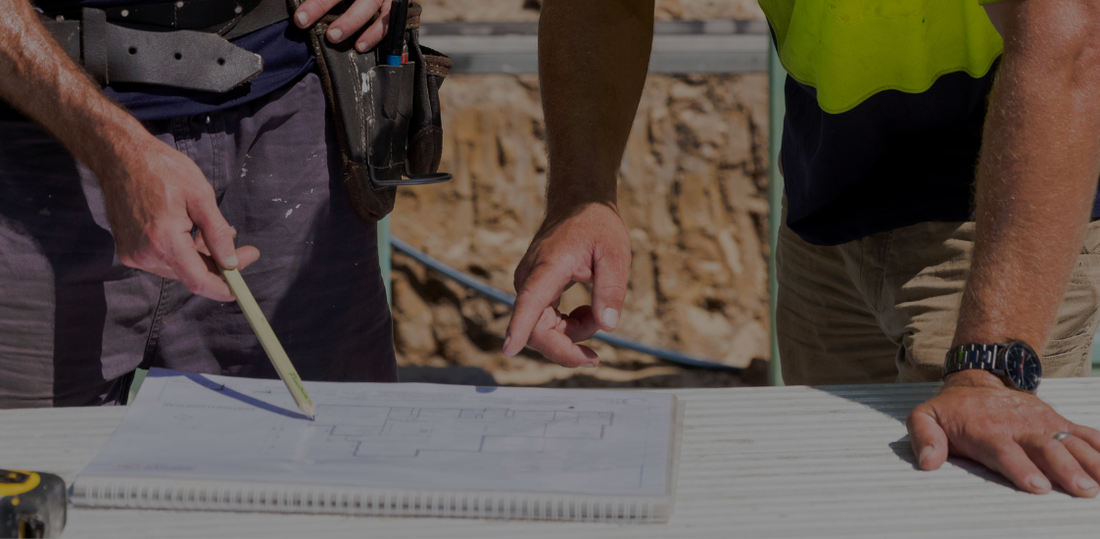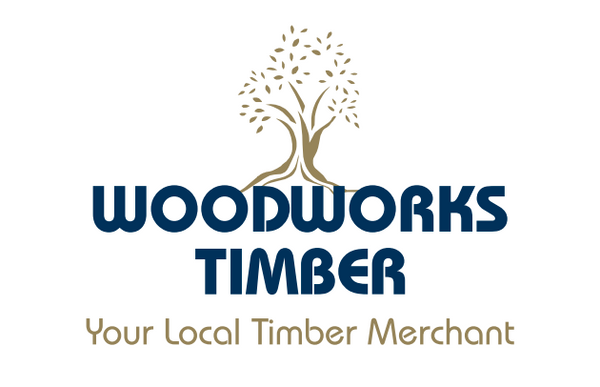
Plywood Sheets UK: Choosing the Best for Your Project from Woodworks
Share
Introduction: Why Choosing the Right Plywood Sheets Matters
Whether you’re a professional joiner, furniture maker, or passionate DIY enthusiast, your project’s quality starts with the materials you use - and few are more versatile or reliable than plywood sheets.
Strong, stable, and easy to work with, plywood sheets are essential for everything from fitted furniture and cabinetry to flooring and wall panelling. Their layered construction gives them superior strength and resistance to warping compared with solid wood, making them one of the most popular materials in modern joinery.
However, not all plywood sheets are created equal. Each type and grade offers different advantages, from flexibility and finish to moisture resistance and durability. Selecting the wrong sheet can lead to warping or poor adhesion - but choosing the right one ensures a professional, long-lasting result.
At Woodworks Timber, we supply premium-quality plywood sheets to customers across the UK, supporting builders, designers, and craftsmen with expert advice and reliable stock. In this guide, we’ll walk through everything you need to know about plywood sheets - their types, uses, and how to choose the perfect one for your next project.
What Makes Plywood Sheets So Versatile?
Plywood sheets are engineered from multiple thin veneers of wood, each layer bonded together with adhesive and positioned at right angles to the previous one. This cross-grain design gives plywood sheets their unique combination of rigidity and flexibility, allowing them to withstand pressure without bending, splitting, or swelling.
Unlike solid timber, plywood sheets come in large, consistent sizes, making them perfect for creating smooth, continuous surfaces. They are also dimensionally stable, meaning they resist the natural expansion and contraction that occurs with changes in temperature and humidity.
The Main Types of Plywood Sheets
1. Hardwood Plywood Sheets
Made from dense hardwood veneers like birch, oak, or maple, hardwood plywood sheets offer outstanding strength and a smooth, premium finish.
-
Best for: Furniture, cabinets, and decorative joinery
-
Why choose it: Excellent surface quality and durability
-
Pro tip: Ideal for staining or lacquering to highlight natural grain patterns
Hardwood plywood sheets are popular among furniture makers who want strength and elegance in equal measure.
2. Softwood Plywood Sheets
Constructed from pine, spruce, or fir, softwood plywood sheets are more affordable and lighter in weight, making them perfect for general construction, flooring, or roofing applications.
-
Best for: Subfloors, walls, and structural work
-
Why choose it: Cost-effective and strong for its weight
-
Tip: Always use exterior-grade adhesive if exposed to moisture
Softwood plywood sheets are the reliable backbone of many building projects - simple, sturdy, and effective.
3. Marine Plywood Sheets
When water resistance is crucial, marine plywood sheets are the best choice. Manufactured using waterproof adhesives and high-quality veneers, they can handle prolonged exposure to moisture without delamination.
-
Best for: Bathrooms, kitchens, and outdoor furniture
-
Why choose it: Exceptional moisture resistance
-
Quality standard: Built to BS 1088 marine-grade specifications
These plywood sheets are indispensable in environments where humidity and splashing are part of daily life. Learn more about marine plywood standards.
4. Flexible (Bendy) Plywood Sheets
Bendy or flexible plywood sheets are designed for creative projects that require curves and shapes. Their thin veneers make them easy to bend without cracking, ideal for design-led interiors.
-
Best for: Curved furniture, arches, and bar fronts
-
Why choose it: Allows creative flexibility in shaping wood
Once curved, the sheet can be secured onto a frame for long-term stability.
5. Film-Faced Plywood Sheets
Film-faced plywood sheets are coated with a durable resin film that protects against moisture, chemicals, and abrasions.
-
Best for: Industrial surfaces, concrete formwork, or vehicle flooring
-
Why choose it: Long-lasting, easy to clean, and resistant to wear
These are the heavy-duty champions of the plywood family - built to perform under pressure.
Understanding Plywood Sheet Grades
The quality of a plywood sheet’s surface veneer determines its grade. Understanding these grades helps you match the right board to your project:
|
Grade |
Description |
Best For |
|
A |
Smooth, flawless surface with no knots |
Visible furniture, cabinetry |
|
B |
Minor imperfections |
Painted or veneered surfaces |
|
C |
Noticeable patches or knots |
Hidden structural use |
|
D |
Rough, unfinished |
Subflooring or temporary fixtures |
For joinery, A/B or B/BB plywood sheets strike the ideal balance between cost and finish quality.
How to Choose the Right Thickness for Plywood Sheets
Plywood sheets come in a range of thicknesses - typically from 3mm up to 25mm or more. The right choice depends on your project’s demands.
|
Application |
Recommended Thickness |
|
Wall panelling |
6–9 mm |
|
Cabinet carcasses |
12–15 mm |
|
Furniture tops and shelves |
18 mm+ |
|
Flooring and structural decks |
18–25 mm |
|
Curved designs |
3–6 mm |
Heavier-duty builds like flooring or shelving require thicker sheets for strength and rigidity, while lightweight wall panels can use thinner options.
Identifying High-Quality Plywood Sheets
When selecting plywood sheets, always check for:
-
Even, gap-free veneers – gaps weaken the sheet and cause warping.
-
Smooth glue lines – look for consistent, well-bonded edges.
-
Flatness – avoid warped or twisted boards.
-
Sustainable certification – choose FSC® or PEFC™ plywood for eco-friendly builds.
-
Uniform surface finish – especially for visible applications like cabinetry.
At Woodworks Timber, we inspect and store all our plywood sheets under optimal conditions to ensure every board is flat, dry, and ready to use.
Working with Plywood Sheets: Expert Tips
Getting clean cuts and professional finishes depends on how you handle your plywood.
Cutting
Use a fine-tooth circular saw or track saw to avoid splintering. Masking tape along the cut line helps reduce tear-out.
Drilling and Fixing
Pre-drill screw holes near edges to prevent splitting. Use wood glue in joints to boost strength and prevent squeaks or loosening.
Finishing
Lightly sand before painting or varnishing. Seal edges with wood filler or edging tape for a professional, moisture-resistant finish.
How to Store and Handle Plywood Sheets Properly
To prevent warping, plywood sheets should always be stored flat and supported.
-
Keep them elevated off concrete floors.
-
Store in a dry, shaded area.
-
Avoid leaning sheets upright for long periods.
-
Allow them to acclimatise for 24-48 hours before installation.
Proper storage keeps your plywood sheets flat, stable, and ready to work with.
Sustainability in Plywood Sheets
Sustainability is increasingly important in construction and joinery. Today, many plywood sheets are made using sustainably sourced veneers and low-emission adhesives.
At Woodworks Timber, our range includes FSC-certified plywood sheets, ensuring each sheet is sourced responsibly from managed forests.
When to Choose Plywood Sheets Over MDF or OSB
Each sheet material has its strengths - but plywood sheets are often the most versatile.
|
Material |
Pros |
Best Use |
|
Plywood |
Strong, stable, moisture-resistant |
Furniture, joinery, structural panels |
|
MDF |
Smooth surface, great for painting |
Interior furniture |
|
OSB |
Affordable and strong |
Roofing, subflooring |
For a balance of strength, finish, and durability, plywood sheets are the superior all-round choice.
Practical Applications for Plywood Sheets
-
Kitchens and Bedrooms: Long-lasting cabinetry and shelving.
-
Decorative Interiors: Wall panelling and contemporary furniture design.
-
Flooring Systems: Subfloors that resist flexing and movement.
-
Retail and Commercial Builds: Lightweight, durable, and cost-effective.
-
Architectural Features: Curved panels and creative installations.
Common Mistakes to Avoid with Plywood Sheets
-
Using non-waterproof plywood in damp rooms.
-
Over-sanding the veneer surface.
-
Not sealing exposed edges.
-
Forgetting to acclimatise before installation.
Following best practices helps you achieve a professional, lasting result.
Conclusion: Build Better with Plywood Sheets from Woodworks
Whether you’re crafting high-end furniture, fitting out commercial interiors, or tackling a DIY project, the plywood sheets you choose make all the difference. With the right selection, your build will be stronger, more stable, and more beautiful - built to last.
At Woodworks Timber, we stock an extensive range of plywood sheets in various grades and thicknesses, sourced for strength, consistency, and sustainability. Our experienced team can help you choose the perfect board for your project and even cut it to size for convenience.
Explore our full range of plywood sheets at Woodworks Timber or contact our team today for expert advice and trade-quality service.
Build with confidence. Build with Woodworks Timber.
